PET/CT artifacts
- PMID: 21237418
- PMCID: PMC4277262
- DOI: 10.1016/j.clinimag.2010.03.001
PET/CT artifacts
Abstract
There are several artifacts encountered in positron emission tomography/computed tomographic (PET/CT) imaging, including attenuation correction (AC) artifacts associated with using CT for AC. Several artifacts can mimic a 2-deoxy-2-[18F] fluoro-d-glucose (FDG) avid malignant lesions and therefore recognition of these artifacts is clinically relevant. Our goal was to identify and characterize these artifacts and also discuss some protocol variables that may affect image quality in PET/CT.
Copyright © 2011 Elsevier Inc. All rights reserved.
Figures




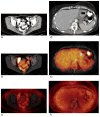

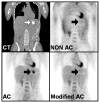

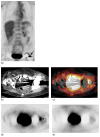
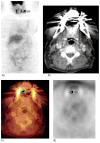
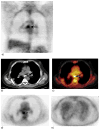

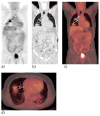



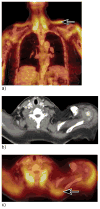
References
-
- Cook GJ, Fogelman I, Maisey MN. Normal physiological and benign pathological variants of 18-fluoro-2-deoxyglucose positron-emission tomography scanning: potential for error in interpretation. Semin Nucl Med. 1996 Oct;26(4):308–14. - PubMed
-
- Puthenpurayil BT, Meltzer CC. AUR 2002. 2002. Photopenic defects in FDG PET scanning.
-
- Carney JPTD. CT-based attenuation correction for PET-CT scanners. In: von Schultess G, editor. CLINICAL PET, PET-CT and SPECT/CT: Combined Anatomic-Molecular Imaging. Lippincott, Williams and Wilkins; 2003. pp. 46–58.
-
- Kotzerke J, Guhlmann A, Moog F, Frickhofen N, Reske SN. Role of attenuation correction for fluorine-18 fluorodeoxyglucose positron emission tomography in the primary staging of malignant lymphoma. Eur J Nucl Med. 1999 Jan;26(1):31–8. - PubMed
-
- Kinahan PE, Townsend DW, Beyer T, Sashin D. Attenuation correction for a combined 3D PET/CT scanner. Med Phys. 1998 Oct;25(10):2046–53. - PubMed

